Bach: Brandenburg Concerto No. 2 in F Major, BWV 1047
Bach: Brandenburg Concerto No. 2 in F Major, BWV 1047
Everyone who knows the Second Brandenburg Concerto thinks: 'Oh great, a Baroque trumpet concerto!' Hence: Baroque trumpet, physical power, high tones, sound – and everything else is secondary. But that's just what it is not: Bach wrote a concerto for four different but equal instruments: trumpet, recorder, oboe, violin. The art was to create a dialogue among these four instruments, and this is obviously only posible when the trumpet plays as softly as the recorder and the recorder as loud as the trumpet. (Nikolaus Harnoncourt)
Bach - Brandenburg Concerto No. 2 in F Major, BWV 1047
Although they are often discussed, recorded, and published as a collection, the six concertos encompassing the so-called Brandenburg Concertos were not written all at once, nor for the same ensemble. Scholars suspect that Nos. 1, 3, and 6 may have been written much earlier than the others, perhaps dating from Bach's Weimar period (1708-1717), while 2, 4, and 5 most likely came from Cöthen. Bach later put the six concertos together and dedicated them to the Margrave of Brandenburg Christian Ludwig, hoping to get a new job out of it. (He did not.) In fact, the only commonality among the six is the use of a three-movement, fast-slow-fast design; this indicates that the Brandenburg Concerti were based on Italian concerto format. Beyond that, they have nothing in common, and, in fact, among the six, there is as much variety as you can find in any six works by Bach.
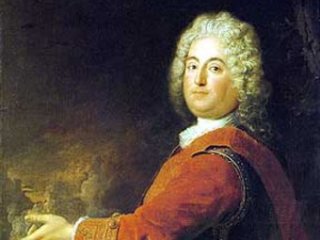
Margrave Christian Ludwig
Because King Frederick William I of Prussia was not a significant patron of the arts, Christian Ludwig seems to have lacked the musicians in his Berlin ensemble to perform the concertos. The full score was left unused in the Margrave's library until his death in 1734, when it was sold for 24 groschen of silver. The autograph manuscript of the concertos was only rediscovered in the archives of Brandenburg by Siegfried Wilhelm Dehn in 1849; the concertos were first published in the following year.
Siegfried Wilhelm Dehn
The Brandenburg Concerto No. 2 may have been one of the last to be written, and it certainly seems like a special-occasion piece. It's a concerto featuring four prominent instruments -- trumpet, recorder (flute), oboe, and violin -- against a foundation of strings and continuo. The writing is virtuosic and brilliant; the high trumpet part, in particular, brings many fine players to grief.
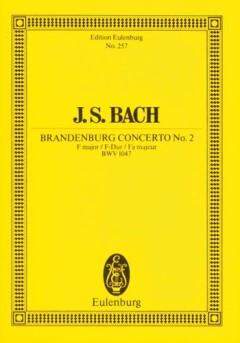
Brandenburg Concerto No.2, sheet
This is an example of a common orchestral genre of the Baroque known as the concerto grosso. (The same is true for Brandenburg Concerto No. 5). A concerto grosso utilizes two ensembles, one large and one small. The large one is called the ripieno or tutti; this includes the orchestra. A group of soloists comprise the smaller group, entitled the concertino (meaning little concerto group). The number of soloists and instruments used was entirely up to the composer to decide.
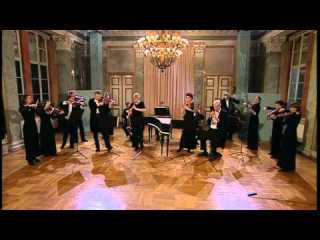
Freiburg Barockorchester plays Brandenburg Concerto No. 2
The trumpet part is very virtuosic, written to employ a style of playing known as clarino playing, in which the trumpeter played in the highest range of the instrument, and used quickly-changing lip pressure to change the pitch of the instrument. Nikolaus Harnoncourt (famous conductor) says: "The trumpet which we use is a natural trumpet, i.e. there are no technical means such as valves and keys. The player has to do everything on his own. How was it played in Bach's time? I think that there were exceptional talents on specific instruments back then just as today. And we know that there was a phenomenal trumpet player in Bach's day who could play everything an octave higher. Bach must have had such a trumpet player at his disposal, since the level of difficulty of this piece is unusual for its time."
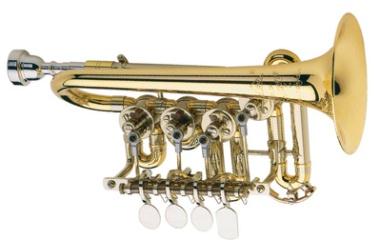
Piccolo Trumpet
Parts: 1. [no tempo indication] (usually performed at Allegro) 2. Andante 3. Allegro assai
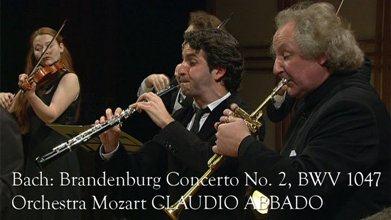
Orchestra Mozart plays Brandenburg Concerto No. 2
The trumpet part is still considered one of the most difficult in the entire repertoire, and was originally written for a clarino (natural trumpet) specialist. The clarino does not play in the second movement, as is common practice in baroque era concerti. This is due to its construction, which allows it to play only in major keys. Because concerti often move to a minor key in the second movement, concerti that include the instrument in their first movement and are from the period before the valved trumpet was commonly used usually exclude the trumpet from the second movement.
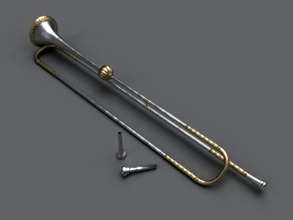
Clarino
Brandenburg Concerto No. 2 provides an excellent example of Bach's use of a ritornello. Bach was an unofficial student of the composer Antonio Vivaldi (1678-1741), whose works he copied by hand (the best way to get copies of music in those days) and sometimes restored. One of the hallmarks of Vivaldi's style is his use of orchestral ritornellos, not just in his concertos (as in the concerto Spring from The Four Seasons), but sometimes in his sacred music (as in the first movement of his famous Gloria). Vivaldi typically began his concertos with a full statement of the orchestral ritornello (sometimes even two full statements), then in between solo passages, he would bring the ritornello back again, though often each subsequent appearance was a bit shorter than the previous. Bach probably got the idea of using a ritornello from studying Vivaldi, and even in this piece, you'll see that some ritornello statements are indeed shorter than the first.
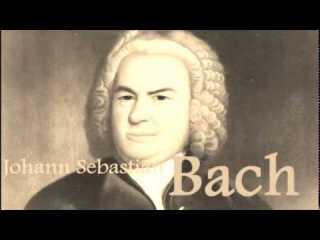
Johann Sebastian Bach
Last Updated (Monday, 10 April 2017 00:02)








